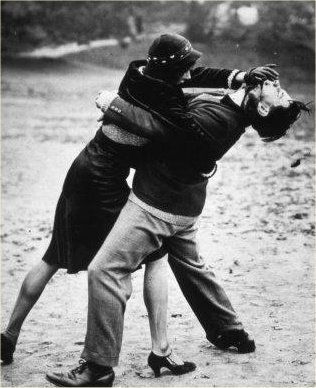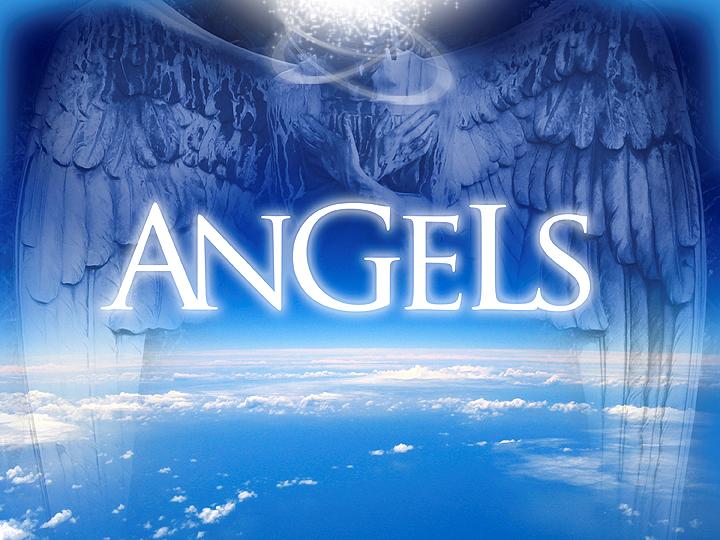The Bible and American Culture
From the very first explorations by the French, Spanish and English, the Bible has been a part of the American landscape. The Bible’s place in North America is so instinctive and so vast that scholars have singled out the subject for special study. For most of American history, the general situation for both testaments was that which Perry Miller, America’s greatest twentieth-century historian, once described for an earlier period: “The Old Testament is truly so omnipresent in the American culture of 1800 or 1820 that historians have as much difficulty taking cognizance of it as of the air people breathed.” If the many dimensions of this subject defy comprehensive summary, it is still possible to recognize the importance of the Bible in America, most simply by seeing its publication as a noteworthy phenomenon, but also by realizing its powerful and multifaceted role in American social and cultural history.
The Bible in Print
The publishing history of the Bible in America is a long and fascinating story, extending from the earliest Spanish explorers in what would become the U.S. to the present, where the sale of Bibles approaches $200 million in annual business. Most impressive about this aspect of the Bible’s history is its sheer immensity.
Throughout their history, Americans have sustained an incredible rate of Bible publication and an even more stupendous appetite for literature about the Bible. Over 2,500 different English-language editions of the Bible were published in the U.S. between 1777 and 1957. More recently, modern translations have joined the Authorized, or King James, Version (KJV) in racking up breathtaking sales. Over fifty million copies of the Revised Standard Version (RSV) were distributed in the first thirty years after its publication in 1952. The Living Bible, a paraphrase by Kenneth Taylor, had over thirty million copies in print from just the 1970 s and 1980 s. Other versions, arising like the RSV and the Living Bible from largely Protestant efforts, have also been overnight million sellers in recent years. Of these, a joint effort by conservative Protestants, the New International Version (published in 1978), has been the most successful, with annual sales by the end of the 1980s beginning to reach those of the KJV. Catholics and Jews have also been active Bible publishers as well. The RSV has been adopted for use by Catholics, and the Catholic Church in America has also sponsored the New American Bible, among several other authorized projects. And the Jewish Publication Society completed in the early 1980s its new version of the translation of the Hebrew Scriptures into English.
Publication of the Bible has been a lucrative business in America, but not without peril. Before the Revolutionary War, the publication of English-language Bibles was prohibited in America, since the King’s printers in England enjoyed an exclusive copyright to printing the KJV. This meant that the first Bibles and biblical portions printed in America were in languages other than English. In 1743, Christopher Sauer published an edition of Luther’s Bible on type carried from Frankfurt and in so doing established his family as America’s leading publisher of Bibles for speakers of German. Even earlier, the Bible had made its appearance in native tongues. Spanish Franciscans were translating Biblical liturgies and other Catholic literature for the Rimucuan Indians of Florida in the sixteenth and very early seventeenth centuries, before permanent English colonies existed in New England. Decades later the Massachusetts Puritan minister John Eliot translated the Bible into Algonquin (New Testament, 1661; entire Bible, 1663). Eliot fully expected this Indian-language Bible to provide the foundation for the Christianization of Native Americans. In spite of failure on that score, other labourers since Eliot have translated at least parts of the Bible into a whole series of Native American languages, including Apache, Cherokee, Cheyenne, Choctaw, Dakota, Hopi, Inupiat, Kuskokwim, Muskogee, Navajo and Ojibwa.
Once American printers began producing their own editions of the KJV, business boomed. Mason Weems, who fabricated the story of Washington and the cherry tree, made his living in the early years of the new nation selling Bibles in Virginia. From there he reported to his publisher: “I tell you this is the very season and age of the Bible. Bible Dictionaries, Bible tales, Bible stories—Bibles plain or paraphrased, Carey’s Bibles, Collins Bibles, Clarke’s Bibles, Kimptor’s Bibles, no matter what or whose, all, all, will go down—so wide is the crater of public appetite at this time.” As successful as Bible publishing was in general, however, that success did not extend to efforts at producing new translations. Until well into the twentieth century, the Authorized Version for Protestants and the Douay-Rheims version for Catholics reigned supreme as America’s Bibles of choice. Nineteenth century publishers who underwrote efforts to produce a Bible specifically for their countrymen found great market resistance to any version that departed from the KJV. Noah Webster, father of the American dictionary, in 1833 finished his translation of a Bible shorn of British spellings and archaic usages. His contemporary Andrew Comstock devised a phonetic “purfekt alfabet” for his “Filadelphia” New Testament of 1848. But these and similar efforts met with little success. Only with the production of the American Standard Version in 1901 did publishers begin to enjoy the market for newer versions that has burgeoned since the early 1950s.
One of the ways Scripture was circulated in the early history of the U.S. was through Bible societies. Although Britain had the first formal Bible society, American groups would be even more active. The American Bible Society, the largest of the societies, has distributed nearly four billion complete Bibles, testaments, scriptural portions and selections since its founding in 1816. Bible societies received the support of many who held traditional Christian views on the Bible’s supernatural character, like the first president of the U.S. Congress, Elias Boudinot of New Jersey, who also became first president of the American Bible Society. But they also were patronized by others with unconventional religious ideas, like Thomas Jefferson, who twice prepared editions of the Gospels with the supernatural parts removed.
Modern organizations that specialize in Bible translation and distribution are the descendants of America’s early Bible societies. Of these, the Wycliffe Bible Translators/Summer Institute of Linguistics has been the most visible. Since its founding in the 1930s, workers with Wycliffe have translated at least a portion of the Scriptures into over one thousand of the world’s languages.
As great as the quantity of Bibles printed in America has been, even greater has been the quantity of literature about the Bible. Statistics can suggest the merest outlines of a literary mountain: four large volumes (with 63,000 entries in 700 languages) in the Library of Congress’s catalogue of books held by American libraries before 1956; sixty pages of Bible materials in the closely packed type of the 1985-1986 edition of Books in Print; ninety-four columns of academic citations to the Bible in the 1983-1984 Religious Index One: Periodicals; seven thousand members of the Society of Biblical Literature, only the largest of many academic societies organized around study of Scripture and many pages in annual surveys by learned journals and popular magazines.
Society and Culture
The vast stretches of literature on the Bible, as well as the booming business of Bible-selling, testify to the prominence that Scripture has enjoyed in American religious life. Discussions concerning the doctrines of revelation and of Scripture itself, suggestions for applying the Bible’s message to daily life and study of the Bible in its linguistic and historical settings account for the vast bulk of publications about the Bible. The 1963 Supreme Court ruling that prohibited the Bible’s use as a religious text in public schools but that encouraged its study for cultural purposes has also fuelled a publishing surge on the Bible as literature. This flood of Bibles and literature on the Bible also points to the immense significance of Scripture more generally in American life.
The Bible has clearly influenced the way Americans write, talk, think and think of themselves. From William Bradford, whose Of Plymouth Plantation recorded the efforts of the Massachusetts Pilgrims to live up to Biblical conceptions of a faithful Christian community, to Senator Sam Ervin, who entertained a national television audience during the Watergate hearings with biblical quotations—leaders in the public eye have freely employed material from the Bible. Many of the nation’s presidents have been lifelong readers of the Bible, from John Adams and Thomas Jefferson at the start of the nation’s history, through Abraham Lincoln, James Garfield, Grover Cleveland, William McKinley and Woodrow Wilson, to Jimmy Carter in the very recent past. In 1864 a group of grateful African-Americans from Baltimore presented President Lincoln with a pulpit Bible—bound in violet-tinged velvet, finished in gold, with a raised design depicting the emancipation of the slaves—as a token of their respect for his efforts on their behalf. In response, Lincoln called the Bible “God’s best gift to man.” Some years before, the skeptical John Adams wrote to his even more skeptical friend, Thomas Jefferson, that the Bible “contains more of my little philosophy than all the libraries I have seen.” Woodrow Wilson, in a speech shortly before he became president, called the Bible “the ‘Magna Charta’ of the Human Soul.”
America’s common people have also reflected a pervasive respect for Scripture. The use of Biblical names for children continues into the late twentieth century and extends a much longer pattern of employing Biblical nomenclature. As Americans in the nineteenth century settled new towns and named new features of the terrain, it was instinctive to turn to the Bible for names like Zoar (from Gen 13:10) in Ohio and Mount Tirzah (Josh 12:24) in North Carolina, or the forty-seven variations on Bethel to be found across the country, sixty-one on Eden and ninety-five on Salem. Bibles were often listed in the estate inventories of common people in the colonial period and Bible societies in the nineteenth century, no less than the Gideons in the twentieth century, often aspired to put a copy of the Scriptures in the hands of every person in a given locality. Public polling suggests that the hold of the Bible on ordinary people remains strong, even in an America that is more secular than it once was. A Gallup Poll from 1979 showed, for example, that forty-two percent of the population believed that “the Bible is the word of God and is not mistaken in its statements and teachings” and that thirty percent of the population read the Bible at least once a week.
Many of the country’s great writers have also reflected the impact of the Bible. From titles (like Ernest Hemingway’s The Sun Also Rises, from Ecclesiastes; William Faulkner’s Absalom, Absalom! and Go Down, Moses; or “Lazarus” from both Eugene O’Neill and Sylvia Plath) and characters (Ishmael, Ahab and Leviathan in Melville’s Moby Dick; Adam from Nathaniel Hawthorne and Walt Whitman) to ethos and moral structure (Harriet Beecher Stowe, Flannery O’Connor, Walker Percy), American authors have found the Scriptures an inexhaustible resource.
In American social history the Bible has acted as both a conservative and a radical force. It has provided a vocabulary for traditional deference, but also innovative egalitarianism. It has fuelled both stability in the face of anarchy and freedom in the face of tyranny. Scripture penetrated to such a deep level nationally that it became a major prop for both sides in the conflict leading to the Civil War. Thus, to many Southerners the Bible was the sure foundation for their way of life. The Reverend Frederick Ross of Huntsville, Alabama, for one, insisted that Southern slavery amounted to a direct parallel of the Bible and was a biblical pattern: “Every Southern planter is not more truly a slaveholder than Abraham. And the southern muster, by divine authority may today, consider his slaves part of his social and religious family, just as Abraham did.” From the North it was a much different story, but based on the same foundation. As the Presbyterian Albert Barnes from Philadelphia put it, “The principles laid down by the Saviour and his Apostles are such as are opposed to Slavery, and if carried out would secure its universal abolition.” Only occasionally did an observer pause to reflect on the tragedy of two Scripture-quoting societies moving implacably toward war. In his Second Inaugural Address, Abraham Lincoln pointed out that “both [sides] read the same Bible” before concluding that God’s purposes might be higher and different than the purposes of Bible-readers in either the North or South.
The Bible has been a charter of social liberty for many who have felt constrained by traditional boundaries or dominating cultural fashions. “The Bible only” was the liberating cry of the energetic men and women who formed many of the new denominations established between the Revolution and the Civil War. On the other side of the picture, the Bible has also played a part in reinforcing social conformity. When the Roman Catholic bishop of Philadelphia, Francis Patrick Kenrick, petitioned city officials in 1842 to allow school children of his faith to hear readings from the Douay Version instead of the King James Version, strong Protestant protests followed. Evangelical ministers formed national anti-Catholic organizations and Protestant laymen vented their anger by rioting against Philadelphia’s Catholic churches.
The most important instance of the Bible’s social liberation in America belongs to the history of African-Americans. Slaves made a sharp distinction between the Bible that their owners preached to them, with its emphasis on not stealing and obeying masters, and the Bible they discovered for themselves, with its message of liberation for the captive and redemption for the oppressed. Under slavery stringent regulations often existed against unsupervised preaching or sometimes even against owning Bibles. But with permission or not, slaves went to great lengths to possess Scripture for themselves. Many made a special effort to hear African-American preachers expound the Scriptures in circumstances unsupervised by masters. One slave left a striking testimony of the difference: “A yellow [light-complexioned] man preached to us. She [the slave owner] had him preach how we ought to obey our master and missy if we want to go to heaven, but when she wasn’t there, he came out with straight preachin’ from the Bible.” African-Americans sang and preached about Adam and Eve and the Fall, about “wrestlin’ Jacob” who “would not let God go,” about Moses and the exodus from Egypt, about Joshua possessing the Promised Land, about Daniel in the lion’s den and Daniel’s three friends in the fiery furnace, about Jonah in the whale, about the birth of Jesus and his death and future return. The narratives of the Old Testament in particular lent slave use of the Bible its special social dimension. For slaves, the figure of Moses assumed a special importance as the one whom God had raised up to free his people. To the hope of liberation in this world, the slaves added a concentration on the figure of Jesus, who suffered innocently and who ministered particularly to the oppressed, as the source of hope for the future. The slave’s profound embrace of Scripture created the climate for the ongoing importance of Bible reading and biblical preaching among African-Americans since the Civil War.
If the Bible deserves special attention for its place in American society, it deserves no less for its place in American intellectual history. The celebrated debate over evolution between William Jennings Bryan and Clarence Darrow at Dayton, Tennessee, in 1925, represented only the most visible instance of the ongoing effort to integrate the Bible and the various fields of human learning. During its first three centuries, most American intellectuals assumed that scientific knowledge proceeded within a framework provided by Scripture. In the twentieth century there has been more controversy. From the side of science and the side of the Bible have come extravagant claims about “warfare” between Scripture and science, and these claims have been the source of endless public attention. More generally, if also less visibly, American Bible-believers have followed many paths to reconcile faith and science.
The Bible has also played an important role in efforts to define the character of the country. Borrowing liberally from Old Testament precedents, many early Americans and not a few in more recent days have regarded the U.S. as God’s New Israel, a nation established in this new-world Canaan as a land flowing with wealth and freedom. Puritan preachers, with a firm covenant theology, often spoke as if God had made special promises to, and was extracting special duties from, his children in New England. More recently, leaders in efforts for national moral reform have used the prophetic language of the Old Testament to call “my people” (2 Chronicles 7:14) back to God. Although Canadians have never indulged such notions to the extent of their fellows in the U.S., Canada too has seen notions of a special divine covenant. In both the nineteenth and twentieth centuries, at least a few Canadian leaders have spoken of “his dominion” with the understanding that God had bestowed special blessings on that northern land.
To balance the picture of the Bible and American culture, however, we must also note a different perspective, because African-American slaves before the Civil War and not a few Christian radicals in the late twentieth century have reversed the typology: America was Egypt, and escape from American institutions and influence was the exodus. Particularly at moments of crisis, however, the themes of Scripture have easily slid over into the terms of national identity, whether apocalypse during the Revolutionary and Civil Wars, redemption during the Civil War by the one whom some called “Father Abraham,” or judgment during national disasters. Late into the twentieth century the messages of American politics still sometimes echo the words and themes of the Bible.
There is not time enough to write of the many other ways in which the Bible has played a part in American culture, often shaping that culture by the power of its own message, but also often shaped itself by the social, economic and artistic patterns of life in America. The Bible has informed the spirituals of African-Americans and Shakers and the more formal hymnody of the churches; it has provided material for paintings both refined and primitive; it has been a primary textbook itself in many American schools and a decisive influence on the curriculum in many more; it has been a factor in legal decisions and jurisprudential reasoning; it has provided the raw material for historical novels, plays, mass art, country music, humour, broadcasting, children’s literature and much, much more. In sum, the Bible has been an ever-present force in American life. Americans have perhaps been more prone than people elsewhere to bend, twist and abuse the Bible for their own sometimes very un-Christian purposes. But from its pages they have also drawn insight, strength and wisdom for life more in keeping with Scripture’s central themes. For good and for ill, it remains true that the person who would understand the history of America must understand the history of the Bible in America.
By M. A. Noll






